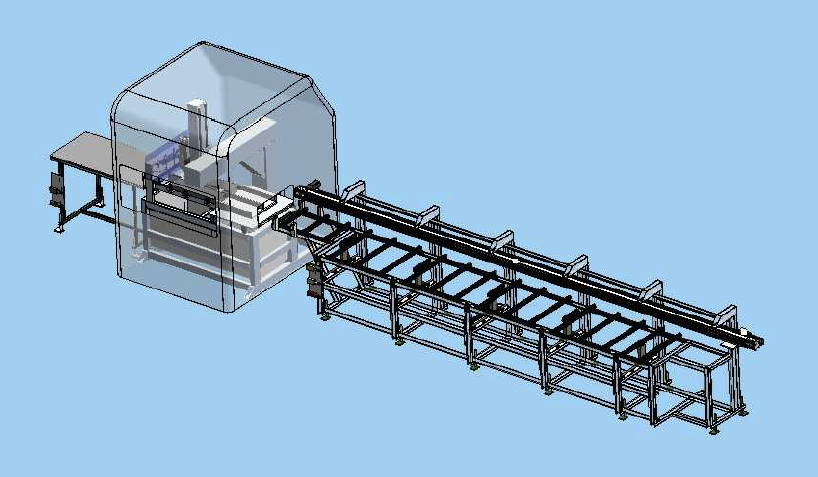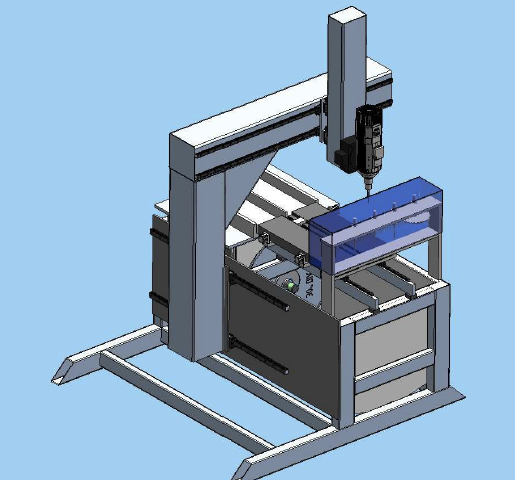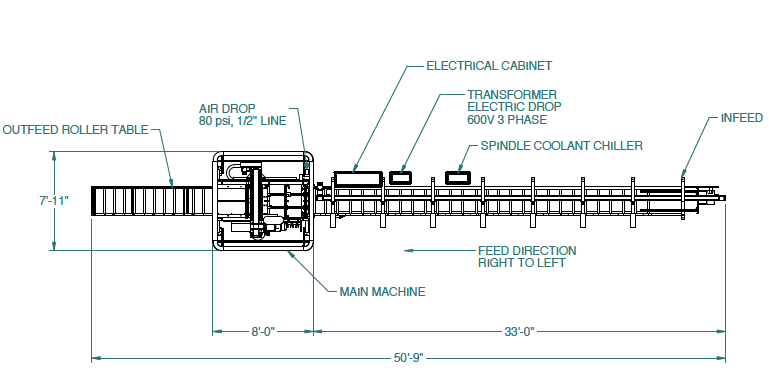No two curtain wall projects are alike. Each has its own unique schematic drawing and consists of an array of lineal parts with distinct profile requirements.
Because of this, curtain wall manufacturers have to be nimble. More specifically, their lineal part fabrication lines need to be flexible enough to produce a diverse set of custom parts, each with its own unique cut length and fabrications.
Many manufacturers build flexibility into their operations using skilled labor and manual saws, jigs and drills. Operators grab a stick of material and a tape measure, eyeing each part to make sure all the drill holes, cuts and fabrications are made in the right place.
But making parts by hand is error-prone, even when measuring twice and cutting once.
You’ll have to remake every part that doesn’t meet your client’s tolerance requirements — and each remake results in scrapped material, wasted production time and slashed profit.
And when a major North American curtain wall manufacturer was losing too many parts to human error, they tasked us with developing a solution.
It was the plant manager that first reached out to us. They were tired of throwing away out-of-spec parts and wanted to find a way to take production decisions out of the operator’s hands. Or, put another way, they wanted us to automate their lineal part production lines.
With our marching orders clear, we got to work.
Part quality was their primary concern. And part quality increases as operator/machine interaction decreases — it’s a tenet of manufacturing automation.
Before partnering with us, their manufacturing process was entirely controlled by operators: 10 skilled operators cut and fabricated parts, one by one, on manual equipment.
We wanted to get from 10 operators to just one. Increased part quality, we posited, would follow.
We wanted one operator to be able to load a stick of material into the machine, and have it come out on the other side, complete and ready for assembly.
To accomplish this, we needed to consolidate all required manufacturing processes into one machine. And we had to ensure we built in the flexibility necessary to ensure the machine could mill, drill and cut the parts required for nearly any custom curtain wall project they might win.
Our SCF-430 CNC machine center platform was the perfect base machine for this project. It combines everything needed to transform lineal materials into finished curtain wall parts — four-axis variable tooling, 30” saw, pusher infeed, outfeed and more.

This machine center relies on a step-through manufacturing process. Once the operator loads the stick of material, the pusher moves the stick through the machine, which performs one manufacturing step after another. It would, for example, drill in one area and then push the stick further and make fabrications in another area. The specific sequence and location of fabrications and cuts would vary depending on the profile of the part being produced.
The four-axis tooling enabled this client to fabricate on each side of the lineal in one pass. The operator only has to interact with the machine when loading and unloading the lineal material.
The SCF-430 produces parts with a high degree of accuracy — by design. It comes standard with an absolute encoder servo motor. This technology allows the machine to track the exact position of the lineal as it’s moving through the machine. It guarantees accuracy within 0.025” — exceeding their tolerance expectations for the machine.

Every curtain wall has parts with different profiles, sizes, colors and fabrications. And while this client wanted to increase throughput with an automated solution, they needed the flexibility to produce many different curtain wall products.
Balancing flexibility with automation is a complex problem, but we found a surprisingly simple solution.
All curtain walls — no matter the unique design requirements of the project — are, at their most basic, a series of rectangles.
We figured we could produce two mirrored parts (either two height pieces or two width pieces) at the same time and double their throughput.
To achieve the same throughput increase using their old manual production process, they would have had to invest in twice as much labor and equipment. And maintaining the additional equipment would, itself, be labor-intensive.
Instead, all we had to do was add another track to their automated SCF-430 machine center, and two lineals could be loaded, fabricated and cut simultaneously. No additional labor, no additional maintenance.
Watch Senior Applications Manager Tom Vajdic describe this concept:
We don’t sell equipment out of a catalog — we engineer solutions that exactly meet the production goals of fenestration production plants.
And for this particular client, narrowing in on the right machine concept required several design iterations.
The biggest design change? Well, once they realized how flexible the SCF-430 platform could be, they wanted more. They gave us a longer list of profile drawings that had to be produced on the machine, and we updated the machine design to accommodate them.
We didn’t stop there.
Anticipating their need to produce a wide range of custom curtain wall parts in the future, we designed the machine to be universal in nature. We designed this machine to flexibly adapt to the needs of their future projects.
In fact, they have changed their curtain wall products over the years, and this machine has been able to take it in stride.
The flexibility in the programming and mechanics of this machine all come down to the work we put into the upfront design process.
On their old manual equipment, operators interacted with wide-open saw assemblies and drill presses. Safety depended on operator knowledge of the equipment.
We always build an extra layer of safety in — keeping operators safe by design.
The tooling and saws are completely enclosed and, only in an emergency stop condition, can the doors be opened. Even then, the doors only open once the tools have stopped moving and the saw has stopped rotating.
The client had two primary concerns related to the appearance of the finished machine:
To address this, we recommended a roller table for their outfeed. Rolling helps prevent scuffing and scratching the paint as the part comes out of the machine.
And we also recommended the client remove salt and drill chips at the same time they wipe oil off of the part. The machine uses oil during production to lengthen the life of the tooling.
Wiping down the part and blowing off a few chips here and there were the only secondary processes required — otherwise, processed parts sitting on the outfeed roller table would be assembly-ready.

Downtime is money. That’s why we take responsibility for ensuring you always have the parts you need to get your machine up and running.
As part of our spare parts service, we:
It was no different for this client. When they need a part, Paul — along with the rest of our service team — delivers.
As we do with all projects, we went through an exhaustive quality testing process at our facility before shipping this machine off to the client’s plant, where we installed it and spent several days training their maintenance team.
You can learn more about the details of this process here, but our goal was pretty simple: Guarantee that the performance of the machine met their quality and cycle time requirements, and that their team was able to run and maintain it when we left.
Once the machine was up and running at their facility, all their operators had to do was load aluminum extrusions into the machine and collect fully finished parts from the outfeed table.
Our algorithmic lineal optimization software automatically optimizes production flow. This software minimizes material scrap, allowing the client to produce the greatest number of parts from every lineal and save thousands every day.
This client reported to us that this machine helped them all but eliminate rework and cleanup, focusing instead on what matters:
Making more parts to-spec per shift with less material.
This shift in focus increased their profit potential every hour they ran the machine. After all, curtain wall manufacturers only profit off of the parts they assemble and sell, not the ones they throw away.
Start to finish, this custom machine took just shy of 10 months to concept, build and install. Because of the upfront work we put in the design phase, the ROI was immediate when compared to manual production — they were saving money from the very first shift.
And over the course of about three years, the machine paid for itself completely through efficiency gains, labor reductions and material yield increases.
Remember: This client’s primary goal was to increase part quality. That we were able to increase throughput, minimize material scrap and significantly reduce labor requirements was icing on the cake.
We engineer lineal processing equipment that fixes quality, cycle time and material scrap headaches for curtain wall manufacturers. Reach out to our team today to start a conversation about your production goals, and what we can do to help achieve them.